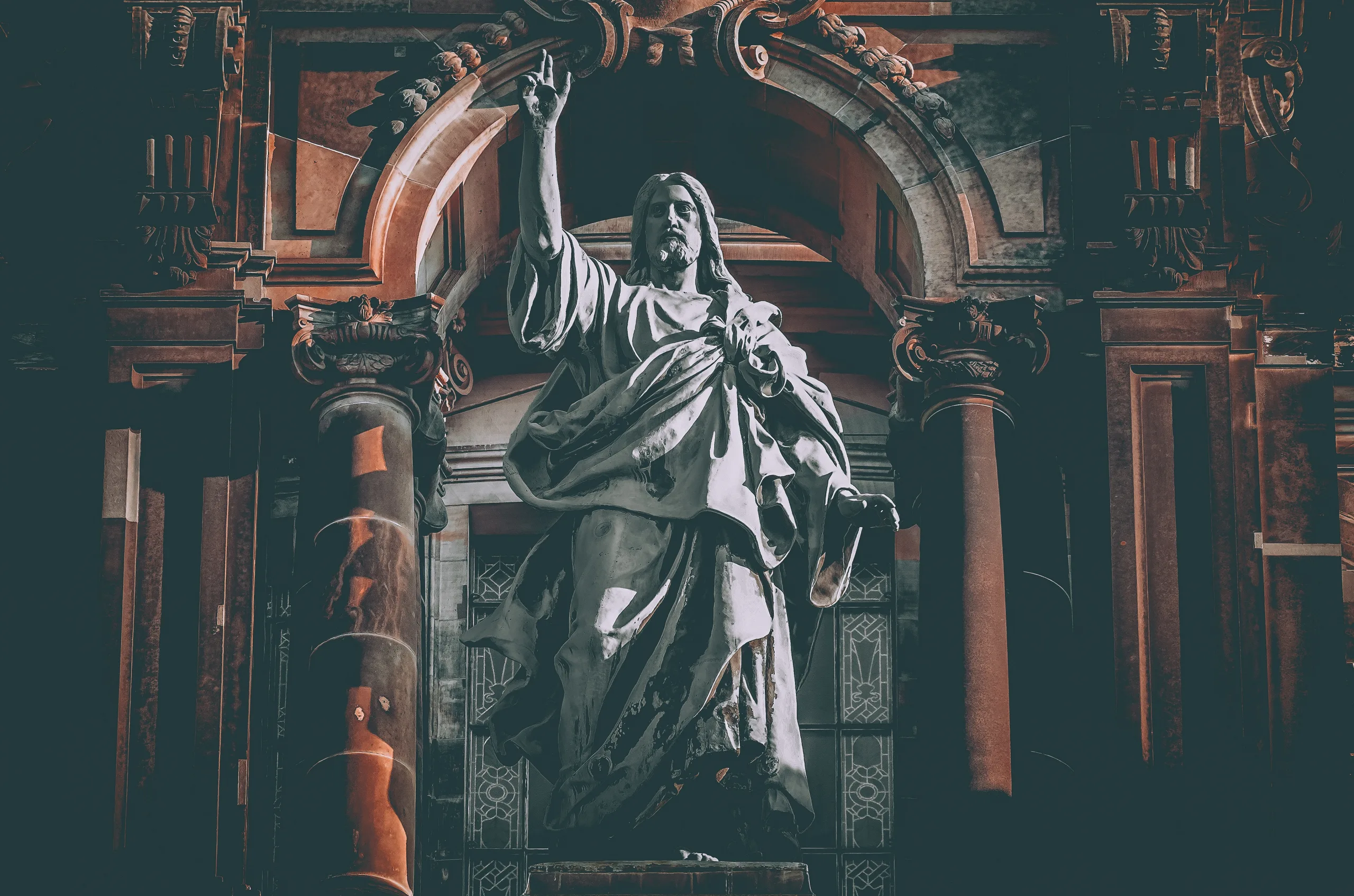What Does It Mean to Say That Jesus Is Lord?

Jesus is Lord” is a well-known declaration among Christians. We talk often about the lordship of Christ. What does this really mean? Do we understand what we are saying? I wonder if the answer is that we understand part of this truth—Jesus is God; Jesus is our Savior—but usually not its full extent. Biblically, it is a breathtaking concept, and we must come to grips with it. (In my opinion, this could be one of this book’s most important chapters.)
Very briefly, the lordship of Jesus Christ ought to mean that everything in this universe is about Jesus. Everything. EVERYTHING. This may sound like an overstatement, but it is thoroughly scriptural. It summarizes everything the Bible has to say about him—and that is a lot!
A Key Passage on Christ’s Lordship
Here is some of what Paul said in his letter to the Colossians. Note the emphasized words:
The Son is the image of the invisible God, the firstborn over all creation. For in him all things were created: things in heaven and on earth, visible and invisible, whether thrones or powers or rulers or authorities; all things were created through him and for him. He is before all things, and in him all things hold together.
And he is the head of the body, the church; he is the beginning and the firstborn from among the dead, so that in everything he might have the supremacy. For God was pleased to have all his fullness dwell in him, and through him to reconcile to himself all things, whether things on earth or things in heaven, by making peace through his blood, shed on the cross.
1:15–20
The universal terms Paul uses here—all and everything—are repeated and significant, and he does not use them lightly. Consider just a few of the wonderful realities Paul conveys.
Two statements are about the deity of Jesus: He “is the image of the invisible God” (v. 15) and “God was pleased to have all his fullness dwell in him” (v. 19). So Jesus is Lord because he is God; all that is true of God is true of Jesus Christ.
In the second phrase of verse 15, the Greek word translated firstborn means “prior to” (in terms of time) and “priority over” (in terms of status). Here, primarily, Paul probably had “priority over” in mind: Christ is superior over all creation. Verse 16 explains why: “In him all things were created.” As we have seen, that is one of the indications of his deity—he does what God does, in this case, create. Christ is Lord because he is the creator of all things.
Not only do all things find their source in Christ, but all things find their purpose in him, as Paul says at the end of verse 16: “All things were created in him and for him.” He is the beginning of all and the end of all, the target toward which creation is moving. Furthermore, “in him all things hold together” (v. 17).
This means he is sustainer of all things: He got everything going, and he keeps everything going. He is the glue and the goal of creation; Christ holds together everything he has made so that it will fulfill its intended purpose: himself. Paul summed this up elsewhere: “From him and through him and for him are all things” (Romans 11:36).
So in verses 15–17, Paul has focused on Christ’s nature as eternal God and on his work of creation. In verse 18, he begins speaking of Christ’s nature after adding humanity to his eternal deity (the incarnation) and his work of re-creation. The problem is, our sin has corrupted what he created and cannot now accomplish what he intended. So now it is necessary to correct through re-creation or reconciliation what we have corrupted. This too he does.
Paul now says Christ “is the head [Lord] of the body, the church; he is the beginning and the firstborn [again, has priority over] from among the dead” [those who will be resurrected to eternal life]. All of this is true because of his work as Savior. In verse 20, Paul says God was pleased “through [Christ] to reconcile to himself all things, whether things on earth or things in heaven, by making peace through his blood, shed on the cross.” But notice the purpose statement at the end of verse 18: “so that in everything he might have the supremacy.” In other words, “so that in everything Christ might be Lord.”

It’s All About Jesus
As Dr. Duane Litfin, a former professor of mine, has put it, we live in a “Son-centered” universe.1 It is all about Jesus Christ. Does this idea slight the Trinity? Absolutely not, and part of the reason is clear in this very text: “God [the Father] was pleased to have all his fullness dwell in him [the Son]” (v. 19). This is what the Father intended all along; it was his plan, his will. Son-centeredness glorifies the Father, a point Paul also makes elsewhere:
At the name of Jesus every knee should bow
in heaven and on earth and under the earth,
and every tongue acknowledge that Jesus Christ is Lord,
to the glory of God the Father.Philippians 2:10–11
What about the Spirit? Jesus himself said, “[The Spirit] will glorify me because it is from me that he will receive what he will make known to you” (John 16:14). The Spirit himself is Christ-centered—willingly, gladly. Christ-centeredness glorifies the Trinity! Dr. Litfin puts it like this: “It was the Father’s design that not just the Christian faith, but the entire cosmos he created, be profoundly Son-centered.”2 We live in a Christ-centered universe by the Father’s design and the Spirit’s disclosure. That is why Christ is Lord of all.
Everything in this universe is from Jesus Christ, about Jesus Christ, and for Jesus Christ. This is what Christians should mean when they say Jesus is Lord. The implications of this are staggering! Think them through.
INTERESTING FACT
Colossians 1:15 yields yet another brilliant truth about Jesus Christ: He is “the image of the invisible God.” God, the most wonderful being in the universe, is “invisible” or inaccessible to us. However, because he wants to be known, he has graciously given us an “image” (likeness, representation) of himself. The Greek term is eikōn, from which we get the English word icon. As clicking on an icon gives us access to all the helpful things digitally “hidden” on a computer’s hard drive, so Jesus Christ gives us access to God and to all the wealth of help and knowledge to be found in him.
1 Duane Litfin, Conceiving the Christian College (Grand Rapids: Eerdmans, 2004). He develops this idea throughout chapter 3.
2 Ibid., 47.
Aaron, D. (2012) Understanding Theology in 15 Minutes a Day. Minneapolis, MN: Bethany House Publishers, pp. 118–121.




